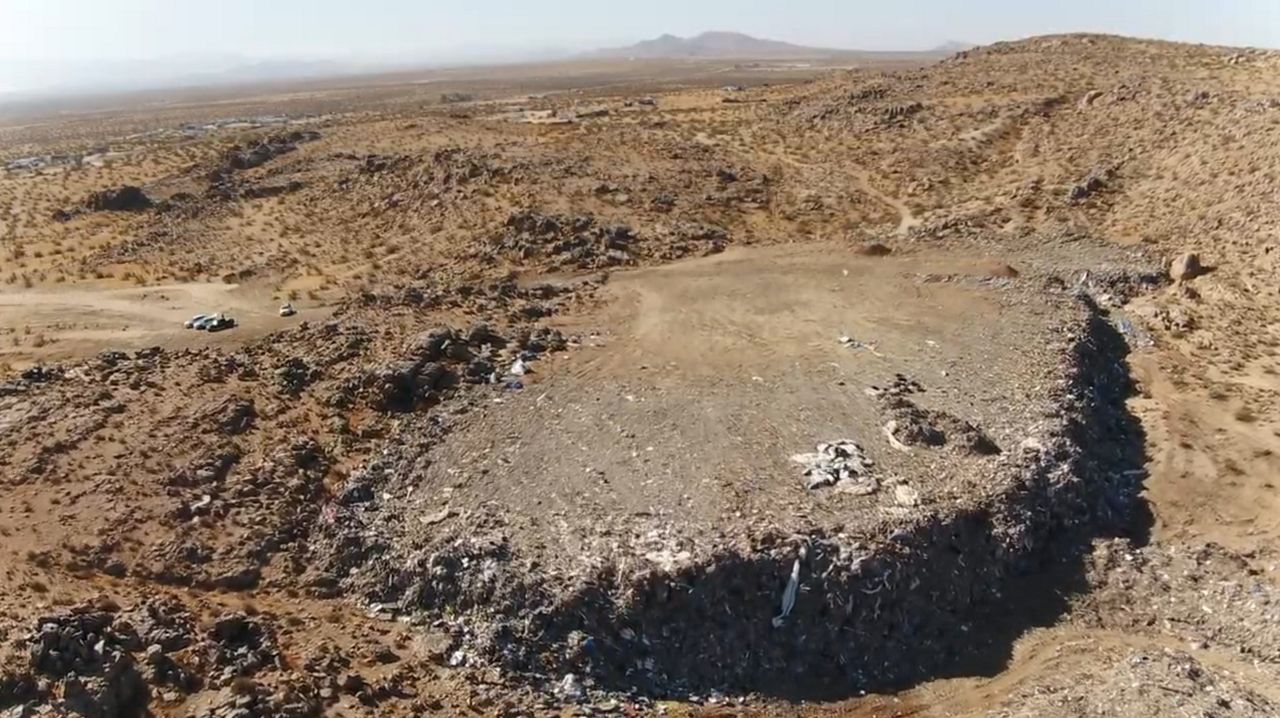LOS ANGELES — The Port of Los Angeles will soon be home to an ambitious experiment to harness the energy of the Pacific Ocean. It’s called Eco Wave Power, and once it’s up and running and connected to the utility grid, it could power thousands of homes and businesses.
What You Need To Know
- Inna Braverman co-founded Eco Wave Power in Israel, having become enamored with renewable energy, but discovering wind and solar power were already too competitive
- Wave energy could produce twice the amount of electricity the world currently produces, according to the World Energy Council
- The first successful deployment of the technology was in Gibraltar at the Southern edge of Spain, where an Eco Wave Power system has been connected to the utility grid for six years
- Its installation at the Port of Los Angeles is its first in the United States
Inna Braverman co-founded the company in Israel, having become enamored with renewable energy, but discovering wind and solar power were already too competitive. “Everybody was fighting for a piece from the same pie,” said Braverman, who co-founded the company in Tel Aviv, Israel, in 2011. “There was nothing to innovate.”
Wave energy, however, could produce twice the amount of electricity the world currently produces, according to the World Energy Council. “Yet no company, no matter how much money it invested and how many human resources and technical resources it had, was able to make it happen,” Braverman said.
So she set about discovering where they had failed so the technology could succeed. A chance meeting with an investor who had helped finance a surf hotel in Panama led to $1 million in seed money. Eco Wave Power is now a publicly traded company on the Nasdaq stock exchange with a handful of grid-connected projects globally.
The first successful deployment of the technology was in Gibraltar at the Southern edge of Spain, where an Eco Wave Power system has been connected to the utility grid for six years. The company is currently finishing construction of its second grid-connected power station at the Jaffa Port in Tel Aviv on the Mediterranean Sea.
It has another 327 megawatts of projects in its pipeline that can power 327,000 homes, mostly in Portugal and Spain. Its installation at the Port of Los Angeles is its first in the United States.
“This is going to be ground zero right here at the Port of Los Angeles,” said U.S. Congresswoman Nanette Barragan, who serves on the House Energy and Commerce Committee. “This is where new emerging technologies and things like wave energy are key. We see projects like Eco Wave that have been tested and have worked in places like Israel. We’re excited to bring them here to San Pedro to see this is the hub of new energy and the alternative forms that we really need to get off of fossil fuels.”
According to the U.S. Energy Information Administration, wave energy could produce 66% of the country’s energy needs. Because waves are nonstop, the energy they produce could be a more reliable source of power than other forms of renewables such as wind and solar, which produce energy at specific times of the day.
“You’re seeing with the Inflation Reduction Act a historic investment in climate change and alternative forms of energy,” Barragan said. “We’re investing in research and demonstration projects every year annually through the Department of Energy on things like wave energy that’s going to help keep the lights on here.”
Eco Wave Power has partnered with AltaSea for its demonstration project at the Port of Los Angeles. An innovation hub for the development of so-called blue technologies that seek more sustainable maritime solutions, AltaSea is an ocean-based lab for science and business entities to accelerate the blue economy. Last year, the state of California and the Port of LA contributed $12 million for the 35-acre campus at a historic marine terminal.
Braverman said Eco Wave Power plans to start its U.S. pilot project with AltaSea at the Port of LA before expanding to the breakwater offshore, where the technology could produce about 15 megawatts of electricity — enough to power 15,000 households.
Eco Wave Power works with breakwaters, or the structures that are built off a coastline to protect them from forceful waves. It uses a system of so-called floaters that sit on the water but are connected to the breakwater. Those floaters rise and fall with the motion of the waves, triggering pistons that compress hydraulic fluid, then release it to turn a hydraulic motor that turns an electric generator producing electricity.
AltaSea is receiving the first of eight floaters for the Port of LA system this month. The remaining seven will be manufactured locally over the next several months. After receiving the relevant licenses and approvals, the project will begin operating.
“I don’t think there’s any better place for us to start in the United States,” Braverman said of the Port of LA pilot. “California is known to be the state that is very, very advanced in terms of renewable energies implementation.”
California has set a goal of 50% renewable energy by 2025 and 100% zero carbon sources of electricity by 2045.











